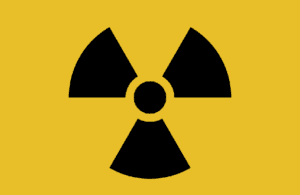
[Image courtesy of Wikimedia Commons]
In case of nuclear war, or even a limited nuclear strike, the greatest threat to human health, besides blast and burn injuries, is from acute radiation syndrome or ARS. This ominous and little-known acronym refers to the acute illness that ensues from significant partial- or whole-body irradiation. High turnover tissues such as the skin, bone marrow, gut and central nervous system (CNS) are particularly vulnerable to ARS.
A bulwark against this possibility is radioprotective countermeasures. These are therapies given before radiation exposure, usually with antioxidant or anti-inflammatory properties that prevent the development or reduce the severity of acute radiation syndrome; other therapies, called radiomitigators are administered after radiation exposure to treat its complications.
The pressing need for radioprotective medical countermeasures
In light of the aggressive saber-rattling from Russia and North Korea, we call on the FDA — and other world regulatory agencies like the EMA — to fast-track the identification, development, testing and manufacturing of safe and effective radioprotective medical countermeasures since, to date, none are approved or available; only a concerted, systematic effort to make radioprotectors widely available (on par with the 18 billion dollar Department of Defense-titled initiative, Operation Warp Speed, during COVID-19) will prepare us for the threat of ARS, which, for all intents and purposes, is a pandemic waiting to happen. Mechanisms to expedite the availability of radioprotectors and to cut red tape, but not corners, include concatenation of clinical trial phases and priority or fast-track application processes.
“The advent of the potential for nuclear terrorism, military conflict or large-scale radiation accidents focused renewed efforts to develop medical countermeasure (MCM) against the effects of potentially lethal, acute radiation exposure,” said Thomas J. MacVittie, MS, Ph.D., in his study: Recent advances in medical countermeasure development against acute radiation exposure based on the US FDA animal rule. “Continued advancement in MCM development requires a clear focus on several criteria identified within the FDA animal rule.”
Comparing ARS and COVID-19
A comparison between ARS and COVID-19 is helpful because it reframes an unfamiliar, little-understood, and hard-to-imagine scenario, that of mass radiation exposure, to one that is familiar, better understood and more manageable from recent experience. Like an unseen pathogen, radiation spreads far and wide from “ground zero” via radioactive “fallout.” Also, like a pathogen, secondary spread is possible through person-to-person or environmental contact, which is likely to mandate the use of personal protective equipment (at a minimum mask and gloves), as well as the imposition of quarantines and lockdowns to restrict movement. In a worst-case scenario, if radioprotectors are not distributed and administered prior to detonation, hospitals will strain to the breaking point, having to manage a surge of critically ill patients with healthcare workers unfamiliar with radiation medicine and overwhelmed in the presence of radioactivity.

Dr. Bryan Oronsky
Hopefully, like the Cuban Missile Crisis, to which the current situation with Russia has been compared, cooler heads will prevail and pull us back from the brink. However, just in case and before it is too late, world governments should widely and immediately arm themselves — not with more weapons but with radioprotective medical countermeasures.
Bryan Oronsky, MD, Ph.D., serves as EpicentRx chief development officer and combines firsthand clinical experience as a physician with 17 years of pharmaceutical development experience.